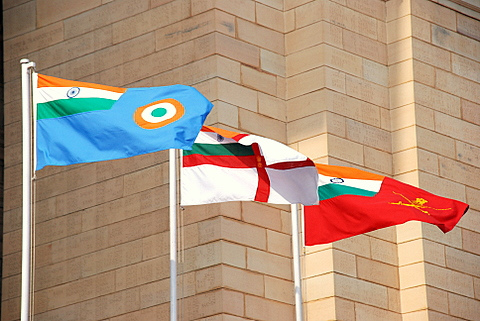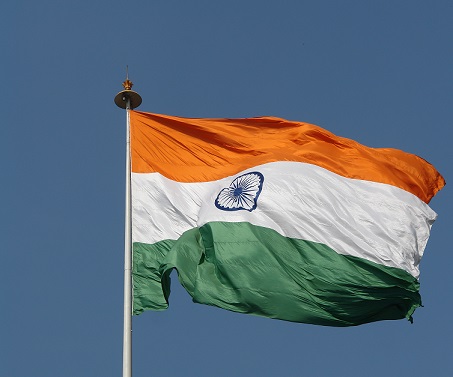
NEW DELHI (PTI): Air power has a huge role to play in any of the integrated battle roles, Chief of Air Staff Air Chief Marshal RKS Bhadauria said on Friday, asserting the Indian Air Force (IAF) was "fully committed" to the theaterisation of the armed forces.
Air Chief Marshal Bhadauria's comments on air power came soon after Chief of Defence Staff General Bipin Rawat talked about the IAF's air defence charter as well as its role as a supporting arm to the ground forces just as the artillery or engineers support the combatants within the Army.
Referring to the situation in eastern Ladakh, the Chief of Air Staff said China has bolstered its infrastructure in the past few months though the two sides have carried out a disengagement process in Pangong Tso areas.
Gen Rawat's comments about the supporting role of the Air Force came at a conference when asked about the growing perception that the Indian Air Force was not keen on setting up the proposed theatre commands integrating the capabilities of the three forces.
Elaborating on the IAF's role, the Chief of Defence Staff talked about its air defence role and said one of the theatre commands will look at the overall management of the air space in the country.
"Do not forget that the Air Force continues to remain a supporting arm of the armed forces, just as the artillery or engineers support the combatants within the Army. They have an air defence charter and support the ground forces in time of operations," Gen Rawat said, adding the force has to understand its basic charter.
Both Gen Rawat and Air Chief Marshal Bhadauria were speaking at separate sessions of a conference organised by the Global Counter-Terrorism Council (GCTC) – a think-tank.
When asked about Gen Rawat's comments, the Air Chief Marshal said: "It is not a supporting role alone. The air power has a huge role to play in any of the integrated battle role."
Asked about the IAF's views on the theaterisation of the armed forces, he said it was fully committed to the proposed setting up of the integrated theatre commands.
At the same time, he added, "We must get it right."
To a question on argument that IAF could have reservations for the theaterisation process as it does not want to split its assets which are fewer, Gen Rawat referred to the five operational commands of the force that manage its resources.
"In an overall assessment, it is a known fact that there is resistance to change. One needs to be conscious of that and fight that inherent resistance. The nature and character of conflicts will continue to change," Gen Rawat said.
According to the plan, theatre commands will have units of the Army, the Navy and the Air Force and all of them will work as a single entity looking after security challenges in a specified geographical territory under an operational commander.
At present, the Army, Navy and the Air Force have separate commands.
The theatre commands are being set up under a larger mandate of ensuring synergy among the three service chiefs to deal with future security challenges.
Gen Rawat took over as India's first Chief of Defence Staff on January 1, 2020, with a mandate to bring in convergence among the three services and restructure military commands to effectively deal with future security challenges.
When asked about the situation in eastern Ladakh, Air Chief Marshal Bhadauria said the Chinese side has enhanced its infrastructure in the region.
"After the initial disengagement which has happened, there is virtual kind of status quo. Many of the infra that were developed particularly from the perspective of air assets... except for some aircraft that they have taken back from forward deployments, rest of infrastructure has been strengthened," he said.
The Chief of Air Staff said the IAF has been carefully monitoring the situation in the region.
"We are monitoring across very carefully and very closely. We are aware of what kind of assets are there and what needs to be done from our point of view; deployments and whatever action needed to be taken have been taken," he said.
India and China were locked in a military standoff at multiple friction points in eastern Ladakh since early May last year. However, the two sides completed the withdrawal of troops and weapons from the North and South banks of Pangong lake in February following a series of military and diplomatic talks.
The two sides are now engaged in talks to extend the disengagement process to the remaining friction points. India has been particularly pressing for disengagement of troops in Hot Springs, Gogra and Depsang.
India has been insisting on returning to the status quo of April 2020 in the region.
According to military officials, each side currently has around 50,000 to 60,000 troops along the Line of Actual Control (LAC) in the sensitive sector.
There was no visible forward movement in disengagement of troops in the remaining friction points as the Chinese side did not show flexibility in their approach on it at the 11th round of military talks.
 Previous Article
Previous Article Next Article
Next Article












The Indian Air Force, in its flight trials evaluation report submitted before the Defence Ministry l..
view articleAn insight into the Medium Multi-Role Combat Aircraft competition...
view articleSky enthusiasts can now spot the International Space Station (ISS) commanded by Indian-American astr..
view article